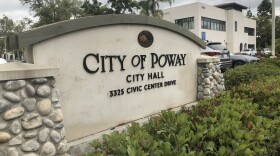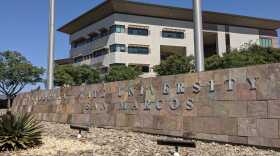In the Southwest traditional healing methods, like herbal remedies, often stem from old Mexican and Native American customs. But these practices have been overshadowed by modern Western medicine and some are being forgotten.
Now a group in El Paso is making plans to start a new school where students can be trained in alternative healing methods.
Along the U.S./Mexico border herbal remedies aren’t hard to find. Across from El Paso, in downtown Ciudad Juárez, an indigenous Tarahumara woman spreads her brightly colored skirts onto a dusty sidewalk in the marketplace. Laid out beside her is the equivalent of a botanical pharmacy for sale.
One by one she lifts small plastic bags packed with dried plants.
“This one is good for kidney problems,” she said. “This one for diabetes and this one for stomach aches.”
The woman has a steady stream of customers including a mother with a restless toddler, an older man in a rancher's hat and a young man with earbuds dangling over his shoulder. The young man is looking for a plant to relieve stress.
These are similar to the kinds of remedies Armando Gonzalez Stuart received as a child growing up in Mexico. Gonzalez now has a PhD in alternative medicine, a subject he teaches at El Paso Community College. He helped organize a health fair on alternative medicine this summer in El Paso and was shocked by the number of attendees.
"We were expecting maybe 300 to 400 people,” Gonzalez said. “It turns out that 2,100 people came on July 20 of this year."
The group that organized the fair is a mix of local professionals who work in education and health care. Now they’ve formed a board to raise money for a new school for natural healing. They plan to call it Centro de Vida, or Center of Life. The curriculum has yet to be determined but will likely include massage therapy, aromatherapy, homeopathic therapies and herbal medicine.
Every month a group of retired men gather at a southeast El Paso clinic to discuss health issues informally. They sit around a break room sipping coffee and cracking open peanuts.
Oscar Adame is part of the group. He’s 68 years old and was born in Ciudad Juarez.
“My mother, when we were young, they used to give us only herbs and yerbitas for every remedy, for the head, for your stomach, for your cold," Adame said.
Yerbitas is Spanish for herbs. Adame confesses he still uses herbal remedies for his everyday ailments. So do others in the group.
Jose Luis Garcia, a local pharmacist, counsels the men. The time he takes with them in this space allows him to learn more about how they care for themselves, something that doesn’t always happen during a 15 minute doctor’s visit.
Often the herbal medicines work to the patient’s benefit, he said, but it’s also important that these remedies are better studied so more is known about their true medical benefits.
“The problem with the yerbitas and the things that we use is that we don't have studies on paper like we do with the medicines. Yet most medicines may come from yerbitas themselves,” Garcia said.
Schools like the one being developed in El Paso may focus on these kinds of scientific studies.
So-called “natural healing” is not always held in the highest regard in the Western medical world. But some forms, such as naturopathy, which uses preventative medical techniques and herbal medicines, already have established schools and graduate licensed practitioners who work around the country.
Naturopathy may see a boost in popularity in coming years. Under President Barack Obama's Affordable Care Act, health insurance providers would be required to include accredited naturopathic practitioners in their coverage.






